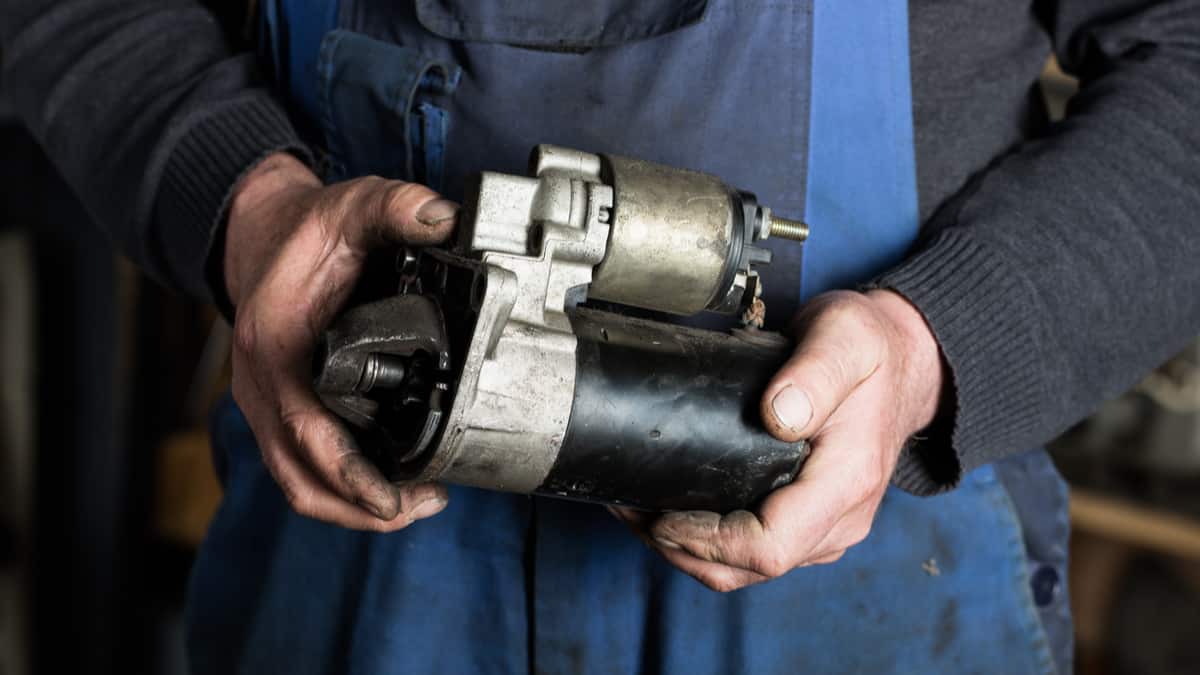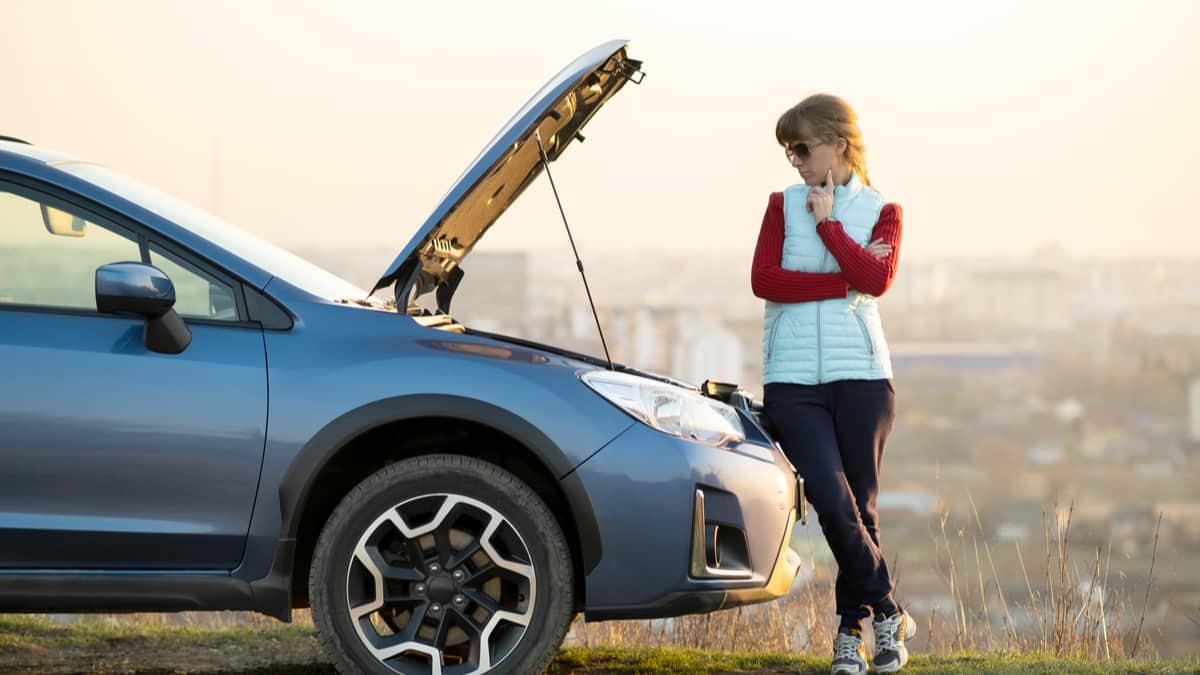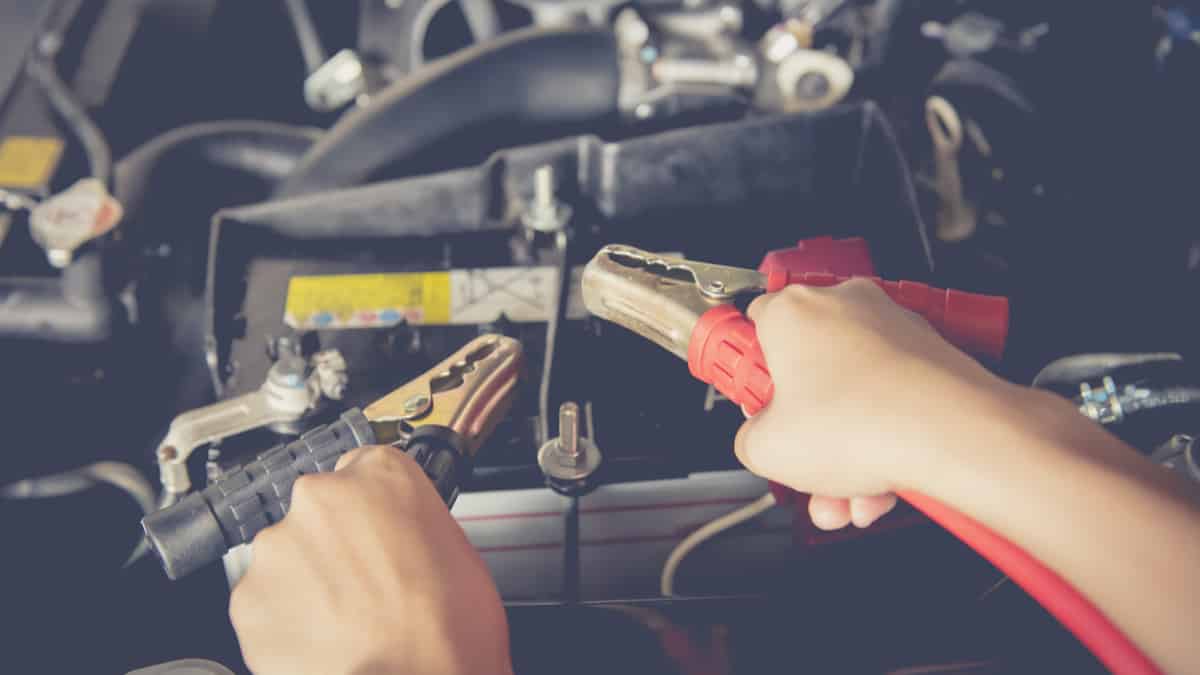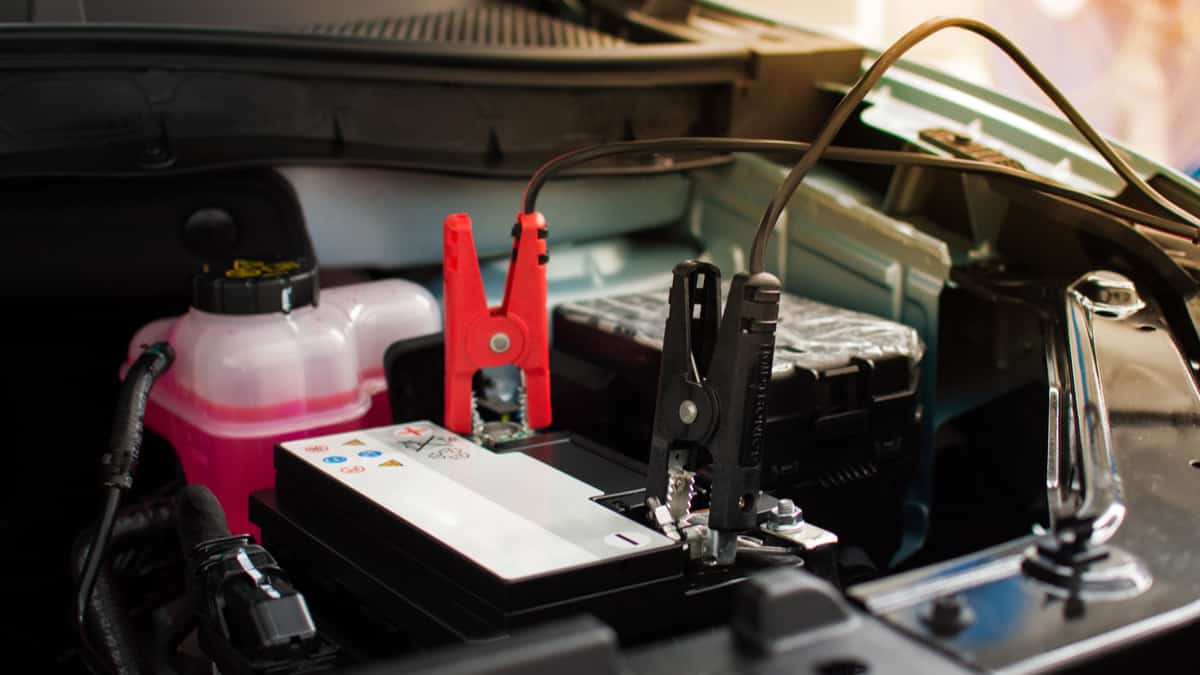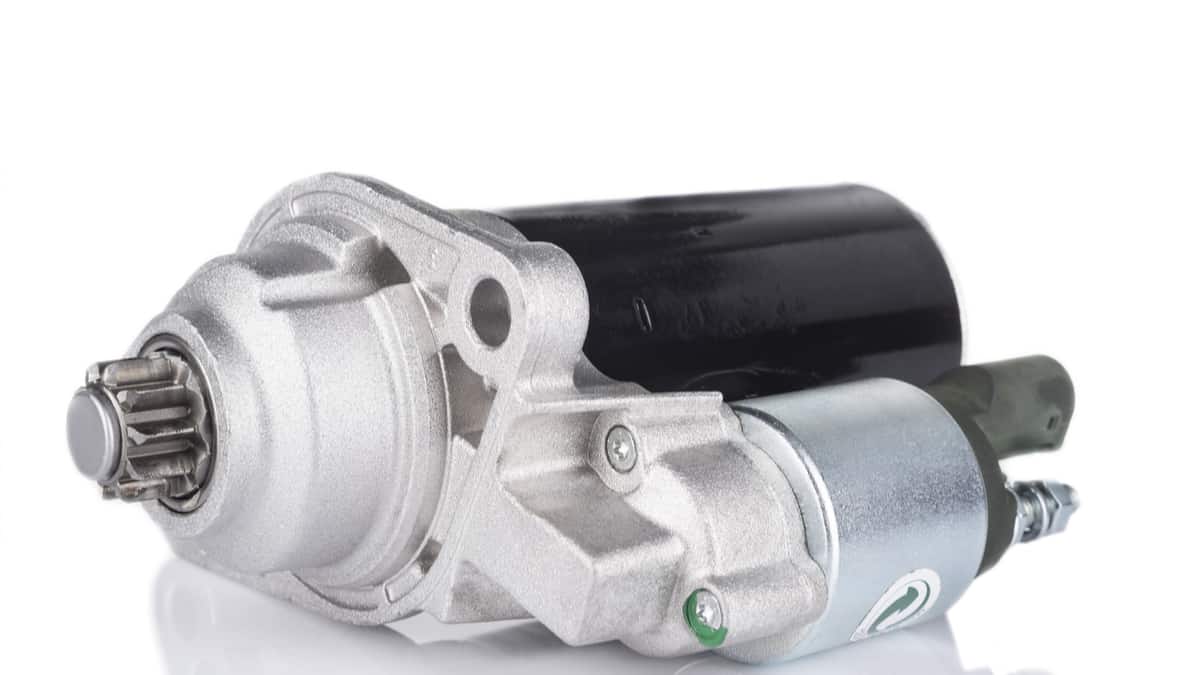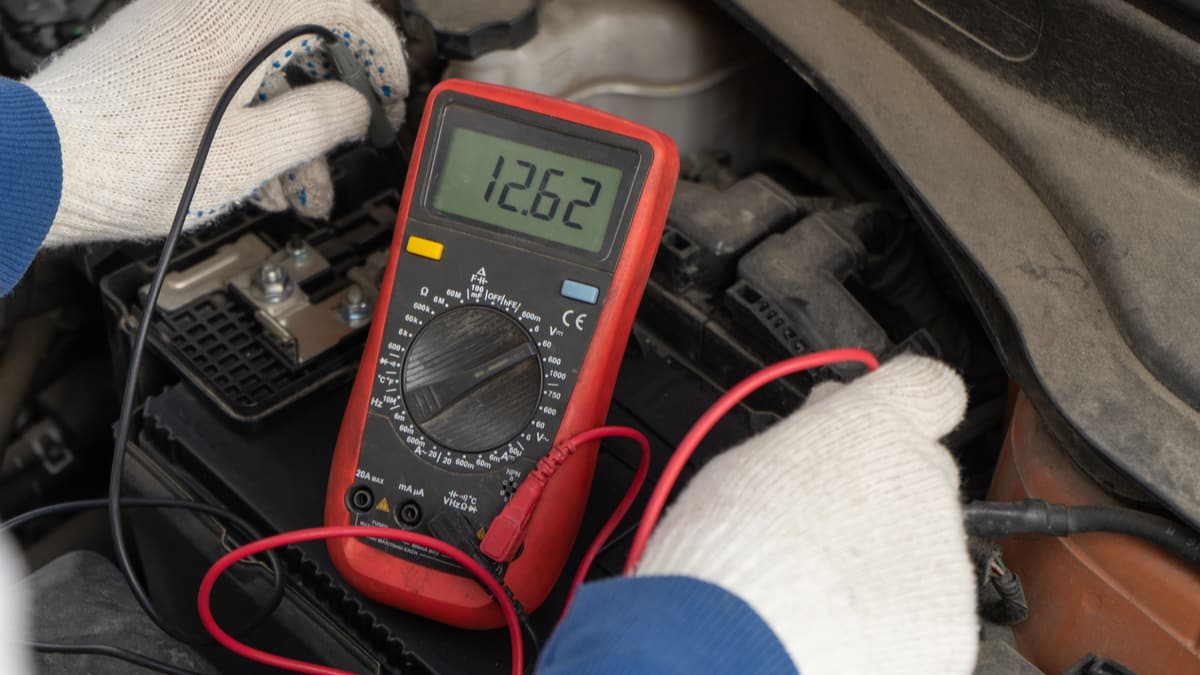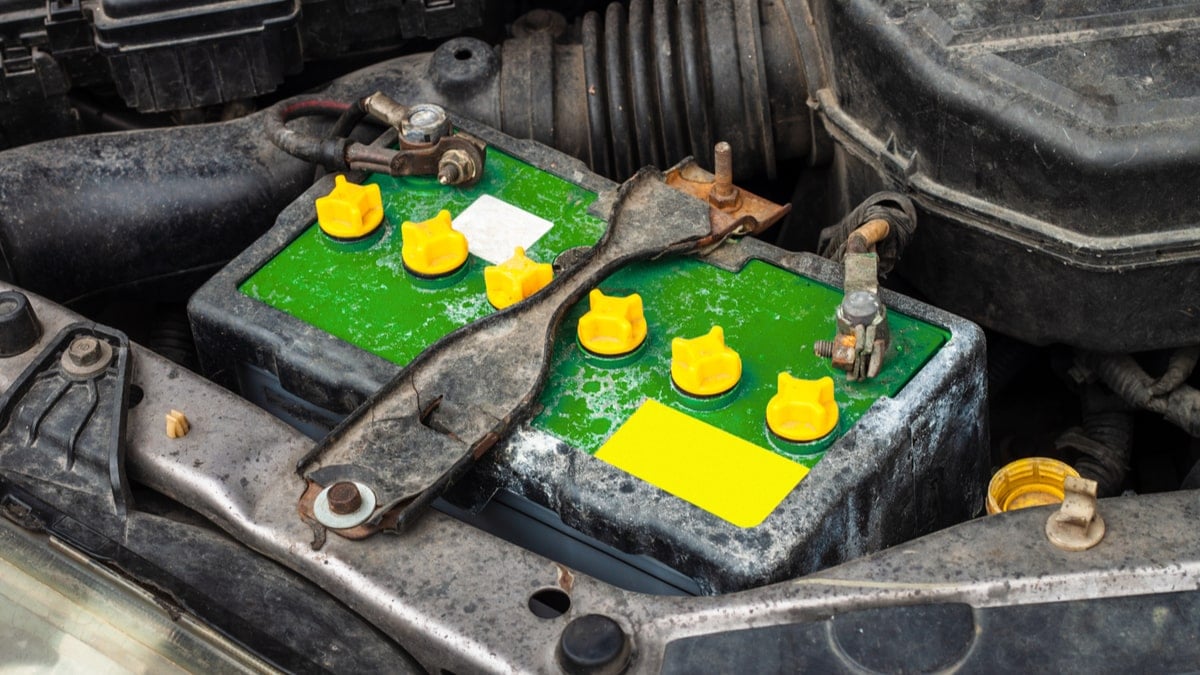If your car starter is beginning to fail, you may have heard that you can hit it with a hammer to get a little more life out of it. This method may help you get the vehicle home, but it shouldn’t be used to neglect a replacement. With that said, do you know where to hit the starter with a hammer?
In this guide, we give you step-by-step directions. We also discuss if you should do this and what to do if the hammer method doesn’t work. There are also instructions on testing the starter and our team answers your top questions.
Where To Hit Starter With A Hammer?
Gently tap the starter motor body or solenoid body to activate it. The stuck solenoid may dislodge, allowing contact with the motor so current can flow through. If the armature has a dead spot, hitting it gently will move the armature to a different position, so contact can be made.
While you tap the starter, have someone try turning the ignition key on and off. However, you need to be careful because tapping it too hard can cause damage to the carbon brushes, permanent magnets and electromagnetic coils.
There’s a huge word of warning with hitting your starter while cranking the engine. Stay far away from anything that moves with the engine running. You want to use a long-handled hammer or mallet for this job so you aren’t near the engine or moving parts when the car gets going.
Should I Hit My Starter With a Hammer?
There’s a good chance you can damage the starter if you hit it too hard with a hammer. For that reason alone, it may not be worth hitting it in the first place.
However, if you aren’t at home and you need to get the car started one more time, you may not have many other options. If there’s no hope of getting the car going and you plan to replace the starter anyway, it may make sense to give it a slight whack.
It can also be a good way to troubleshoot if there is an issue with the starter. If it works after you gave it a tap, it’s definitely time to replace it.
Why Does Hitting A Starter Make It Work?

Tapping the starter works in numerous ways, depending on what’s going on. Here are a few possibilities:
- Provides a jolt that connects the brushes with the commutator
- Dislodges a stuck solenoid
- Pushes armature into a new position for better electrical contact
When you hit the starter with a hammer, you may dislodge the plunger of the solenoid that’s stuck. This part gets stuck from dirt and grime accumulation. When it is stuck “in,” the pinion gear can’t move out to engage with the flywheel.
Additionally, the brushes in the motor are often made from copper or carbon. Over time, these brushes can rust, which creates problems with the electrical contact. If the brushes are stuck, hitting the starter may jar them enough to complete the circuit.
Furthermore, there could be a dead spot in the starter. If you hit it enough to move it past this dead spot, it could start running again.
What To Do If The Starter Is Still Not Working After Hitting It With A Hammer?
If you can’t get the starter running again and you made sure that the starter is the issue, it needs to be rebuilt or replaced. For most people, it makes sense to replace the starter. The cost isn’t much cheaper on a rebuild and other components of it could go bad prematurely.
Depending on the vehicle you drive, the price you spend will vary. On average, a new starter costs $300 to $550 for parts and labor. You may be able to get the starter for $100 to $350, saving you money on the labor if you can install it yourself.
It’s also wise to be cautious about the starter you buy. You can find super-cheap starters, but these aren’t going to last as long. Opt for a more expensive one from a reputable brand to ensure it doesn’t leave you stranded.
RELATED: 5 Reasons Why Your Starter Is Not Engaging & How To Fix It
How To Test A Bad Starter?
When a starter is going bad, you normally get some warning from the noises it makes. Here are a few sounds to be aware of.
- High-speed whirring: This sound indicates that the starter isn’t reaching the flywheel. Instead, it’s circling around because of a solenoid or drive issue. A ring gear may also be lacking a tooth.
- Clicking: One of the most common sounds is a clicking as the starter fails.
- Grinding: The starter engages the ring gear part of the way. You may be able to get the starter going after a couple of tries.
- Silence: When there’s no sound after turning the key, the starter may have failed.
Either way, testing a car starter isn’t a difficult task. Many auto parts stores offer free starter testing if you don’t want to do it yourself. Otherwise, follow these instructions.
- Rule out the battery first. Test it with a multimeter to ensure it reads between 12.2 and 12.8 volts with the engine off. If it’s lower than that, you need to charge the battery first.
- Watch the multimeter while trying to start the engine. If the battery voltage drops below 10, you may need to replace it.
- Examine all of the connectors and wiring between the starter, ignition switch and battery. If you see anything frayed or broken, fix it now. Clean off any battery corrosion and don’t forget to check the ground.
- Use a test light at the main power wire of the starter to ensure it’s powered.
- Connect a remote starter switch to the positive terminal of the battery and the solenoid terminal (smaller wire) of the starter.
- Click the switch. If nothing happens, the starter is bad. If it turns, your problem is electrical.
- Attach alligator clips on the test light to the ground. This step helps to check the signal from the ignition switch. Have a helper turn the key while you probe the solenoid terminal. The light should turn on if the ignition switch is functioning. If it does, the solenoid is bad. If not, check the relays and fuses.
- There could be fuses for the starter in the box within the cabin or in the power distribution center under the hood. Replace any blown fuses with the same power rating.
If you’re unsure what to do next or you are struggling with these steps, reach out to a mechanic instead.
Will a dead starter click?
The starter can click if it’s dying. However, it’s not the only noise that the starter makes. It can also create a whirring if the starter can’t reach the flywheel or a grinding noise when the ring gear isn’t engaged properly. When the starter is dead, it can also make no noise at all.
Will a car jump if the starter is bad?
The jump start only provides power to the battery, which likely isn’t the issue if you think that the starter is dead. It’s not going to create the movement needed for the starter to work. Therefore, you won’t be able to jump-start a car with a bad starter.
How do I activate my starter fast?
If you aren’t at home and the car won’t start, you can try to hit it gently with a hammer. If there’s a dead spot, it may cause the starter to rotate to a better location. Try starting the car again to see if gets started. If not, you may need to hire a tow truck to bring your vehicle home.
How do you diagnose a bad starter?
First, you want to ensure that the battery and electrical connections are in good working order. Then, you need to use a test light to ensure the starter is getting power. You can also connect a remote starter switch to see if you can get it going. Otherwise, you may have a bad fuse that needs to be replaced.
How do you tell if it’s your starter or battery?
If the battery is dead, you will notice other problems at the same time. For example, the interior electronics won’t work and the headlights may be dim. On the other hand, if the battery is in good working order, all of these things will work, but you won’t be able to get the engine going with a bad starter.
There are multiple reasons why a car won’t start, so it’s not safe to assume that the problem is always related to the starter. You could also have a dead car battery, trouble with the ignition switch or an electrical system malfunction.
However, if you are convinced that the starter is to blame, you may be able to hit it with a hammer to get it going. Just be careful not to hit it too hard or you could cause more damage. If the hammer trick helps you get home so you can replace the starter, then it’s worth doing. Just don’t rely on this method to keep driving the car when it needs repair.
Categories: Guides
